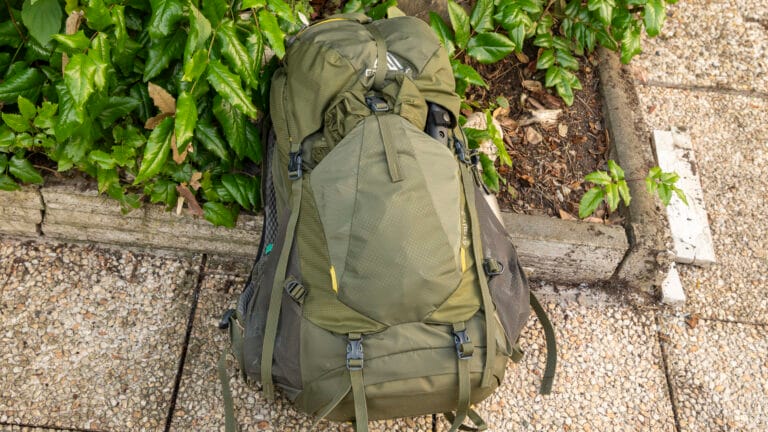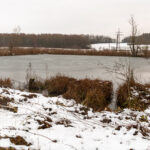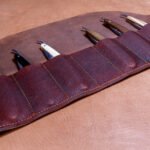What is a Disaster Bag?
This emergency bag is known under many names, among them “bug out bag”, “go bag”, “SHTF bag”, and many more. It is a pre-packed bag designed to grab in an emergency, and which contains everything one could need for about 72 hours – outside, perhaps underway, and assuming that you are on your own. While many visualize a complete breakdown of society or a “zombie apocalypse”, I’m a bit more optimistic and keep my bag with a view to natural disasters and only temporary disorders. Even that is quite unlikely to happen, but I prefer to be at least somewhat prepared.
I have a backpack stuffed with over 100 items I envision needing or wanting to live outdoors in the winter in central Europe for at least 3 days. The backpack is fully packed and stored in an easily accessible closet and needs to be grabbed and shouldered. There are hundreds of sites on the internet describing what should go into such a bag, and various vendors also offer pre-packed bags at price points up to thousands of dollars. There is a lot of misinformation and junk out there, from those who say that deodorant is a lifesaver and those who include tins of caviar and Fortnum & Mason items, to those who require carrying enough arms and ammunition to outfit a platoon. I’ll try to keep my opinions limited to my pack and why I chose the contents as I did.
Below are 5 of my decision-making categories for building my bag:
Volume
While a 40L or 50L backpack with a mere 10-15kg of contents sounds like more than enough space, many items are bulky and don’t pack well without some effort and planning. But it is possible to do so using simple techniques, such as packing items into pots and other hollow containers and removing excess packaging. Compression sacks for voluminous things like coverings, sleeping bags, and clothing do wonders as well. But I have found that my vacuum sealer does an even better job – my spare clothing is now less than half the volume, and the resulting pack is as stiff as a board. Naturally, they bounce back to their original size once opened and can’t be recompressed entirely once underway, but in that case, I can make do by carrying the bedroll on the outside of the pack. By that time, the backpack no longer needs to look like a “normal” pack and can look like an outdoor one.
Weight
This is an important subject that should be a primary consideration when building any pack. While it would be great to buy a huge backpack and pack everything one might need or could have a use for (like a backup Kindle and a large bottle of hair conditioner, as well as scented soap), the reality is that weight considerations are the first thing that will limit the bag’s contents. While many pundits say a backpack should be no more than 25% of body weight, in reality, the more conservative 10%-15% range is likely the upper limit for comfortable long-term carrying. That’s easy to test, just get some bottled water bottles to give about 15% of your body weight in a backpack and then go on a walk for an hour or two; that will make most people realize how important it is to weigh every item in a pack and, for those which aren’t critical, decide if the added weight is worth it.
There are several ways to lose weight; the foremost is not packing unnecessary items. Choosing items that serve multiple purposes goes a long way in reducing total weight. Removing excess packaging material is another – despite getting rid of unneeded packaging and repackaging things like food bags with vacuum-sealed bags, the total weight of packaging in my bag is still around 7% of the total weight, unless I include the backpack, in which case we arrive at just under 25% total weight! Some of that can’t be avoided; for instance, the fuel canister is just as heavy as the contents, and water needs to be packaged in bottles.
Environment
The expected scenario and environment are important factors to consider when choosing the contents of a disaster bag.
Location

The environment I expect to be in is a central European location, which means a Köppen climate of temperate continental to cool continental. Rainfall and water are plentiful and readily available. Temperature swings are moderate between day and night, and shelter and clothing can be chosen accordingly. The flora is generally not dangerous, and few faunae pose a direct threat; particularly close to urban areas, one could at most expect wild boars and smaller animals. Urban areas are close to each other with excellent infrastructure.
Season
The seasonal temperature differences are enough to warrant changing the pack contents, but not to the point of being excessive. I opted to pack for winter, and if needed, I can dump excess gear.
Emergency Scenarios
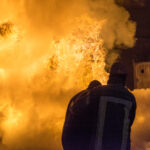
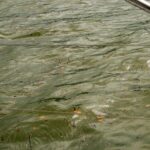 When and why would I need my bag? In decreasing order, that could be a vehicle breakdown, localized weather disaster (inclement weather, fire, flooding), significant disruption (city services fail – no water & power for an extended period), war (thank you, Mr. Putin), and the all-important zombie apocalypse.
When and why would I need my bag? In decreasing order, that could be a vehicle breakdown, localized weather disaster (inclement weather, fire, flooding), significant disruption (city services fail – no water & power for an extended period), war (thank you, Mr. Putin), and the all-important zombie apocalypse.
Cost
While a typical household might already have many of the required items, the things that go into the bag are permanent and shouldn’t be removed. Items like extra clothing or first-aid supplies generally don’t need to be purchased, but unfortunately, many other required items have to be bought and carry a high price tag. The lighter the material, the more expensive it is. Using a titanium gear instead of stainless steel or aluminum can reduce the weight to a fraction of the original, but it can cost several times as much. I opted to get some nice titanium cooking gear weighing under 200g to replace my old Trangia aluminum stuff, which weighed over 700g, but that added to the cost. I’ve put German prices on the items in the tables below, and my total comes to just over €1.000. I think a similar pack can be built for half that price or even less, but I chose to go for quality and lightweight items, and I’m fortunate not to have to worry too much about cost. It is always possible to make a pack at a specific price point and then, over time, exchange components. This makes it somewhat less damaging to the bank account…
"Need to have" vs. "Nice to have"
This is, for the most part, not an absolute scale. Some items, such as water, are essential to survival. Others, like food, aren’t necessary for just 3 days, but they certainly make life more bearable and can work wonders for well-being.
I have several things in my bag that are most definitely only “nice-to-haves “. Hygiene items like toothpaste, lip balm, and antiseptic wipes aren’t necessary, to say nothing of my Aeropress coffee maker and coffee!
Using the 72-hour time limit as a factor, I could do without the cooking gear and food and save over 2 kg of weight, about 25% of my total backpack weight! But I do want the solace of food and need to feed my addiction to caffeine, so those items stay in my pack despite not being necessary.
Many emergency bags contain batteries and charging methods for cellular phones and other electronic devices. These are absent in my bag since I don’t carry a phone with me in daily life. While a radio might be beneficial, the population density is so high in areas where I plan to be that I believe I can do without it and save on that item as well.
Emergency Bag Categories
Click on the headings to sort by column, click on any column to see detailed table below| Category | Comments | Weight(g) | %Weight | Cost (€) | %Cost | |
|---|---|---|---|---|---|---|
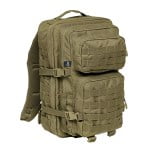 | Storage | Backpack & bags | 1609.7 | 16.3% | 40.70 | 4.0% |
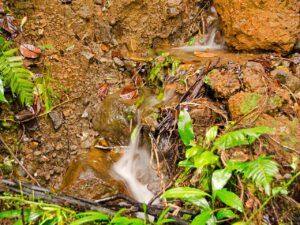 | Hydration | Water & purification | 1145.6 | 11.6% | 81.24 | 7.9% |
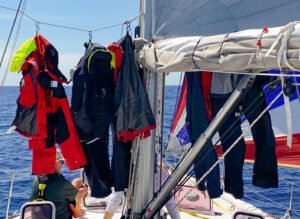 | Clothing | Staying dry and warm | 886.5 | 9.0% | 62.86 | 6.1% |
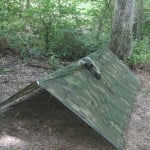 | Shelter | Warmth & Cover | 1952.1 | 19.8% | 200.83 | 19.6% |
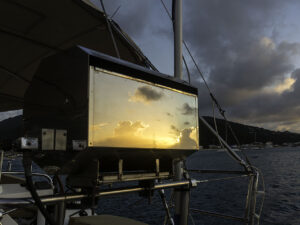 | Cooking | Utensils for cooking | 1026.1 | 10.4% | 195.66 | 19.1% |
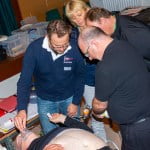 | First Aid | Basic first aid gear | 270.5 | 2.7% | 15.27 | 1.5% |
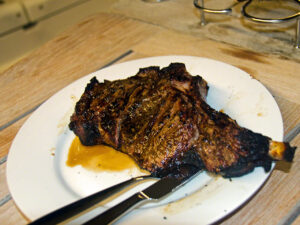 | Food | Calories for the road | 1079.0 | 11.0% | 47.55 | 4.6% |
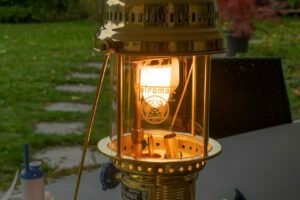 | Fire & Light | Sparks & Lumens | 427.2 | 4.3% | 69.66 | 6.8% |
 | Hygiene | Basic essentials | 326.5 | 3.3% | 14.81 | 1.4% |
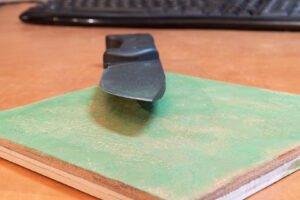 | Miscellaneous | Other gear | 1125.9 | 11.4% | 294.44 | 28.8% |
| Totals | 9,849.1g | €1,023.02 |
Click on a category row above to view details
Storage
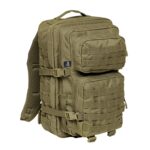
The backpack is the biggest and heaviest item not only in this category, but of the whole list. I already had a 40l backpack which I repurposed for this, but while it is nice to have an olive-drab pack with Molle attachments all over, it certainly can’t be viewed as a typical day backpack and does stand out a bit. It weighs quite a bit, so sometime soon I’ll probably switch over to an ultralight backpack to be less conspicuous and save weight at the same time.
The other items in this list are assorted plastic bags. The big ones can be used to stuff leaves in and make a comfortable and insulating layer or can be cut apart and used for shelter. All of the bags are watertight so can be used to keep the rest of the items dry.
| Description | Weight(g) | %Weight | Cost(€) | %Cost | Comments |
|---|---|---|---|---|---|
| Backpack | 1378.0 | 86.3% | 100.00 | 99.5% | Comfortable (and used) Gregory Stout 35l backpack with chest and waist belts |
| (1) 3l sealable plastic bag | 11.0 | 0.7% | 0.10 | 0.1% | Waterproof storage |
| 200l bag | 136.0 | 8.5% | 0.10 | 0.1% | Thick bag. Tent, shelter, stuffed as insulation, cut apart as needed. |
| 100l bag | 52.3 | 3.3% | 0.10 | 0.1% | As above, various uses |
| (3) 30l bags | 19.8 | 1.2% | 0.20 | 0.2% | As above, various uses |
| Totals | 1,597.1g | €100.50 |
Hydration
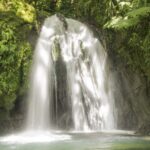 In Europe water is plentiful. There is frequent rainfall in additional lakes, ponds, streams and rivers which never dry out. This is good news for me. I only need to carry a minimum amount of water in the pack as long as I have means to collect and purify water found underway. I have both a mini filtration system and purification tablets. If I have a particularly dirty looking water source, I can use a paper coffee filter or my shemagh or other unused clothing item to remove sediment before purifying. And to top it all off, I have my stove to boil off water in addition to the previous methods. That’s 3 means of making drinking and cooking water, and in a worst-case scenario I could just drink untreated water and hope that should I get diarrhoea it won’t affect me until I reach a destination and it won’t impede my progress.
In Europe water is plentiful. There is frequent rainfall in additional lakes, ponds, streams and rivers which never dry out. This is good news for me. I only need to carry a minimum amount of water in the pack as long as I have means to collect and purify water found underway. I have both a mini filtration system and purification tablets. If I have a particularly dirty looking water source, I can use a paper coffee filter or my shemagh or other unused clothing item to remove sediment before purifying. And to top it all off, I have my stove to boil off water in addition to the previous methods. That’s 3 means of making drinking and cooking water, and in a worst-case scenario I could just drink untreated water and hope that should I get diarrhoea it won’t affect me until I reach a destination and it won’t impede my progress.
| Description | Weight(g) | %Total(g) | Cost(€) | %Total(€) | Comments |
|---|---|---|---|---|---|
| Water purifier | 56.0 | 4.9% | 53.95 | 66.4% | Sawyer Mini water purification system |
| 2x 500ml water plastic bottles | 1060.0 | 92.5% | 2.00 | 2.5% | Minimum water amount. Empty bottles can be re-used. |
| 50x Micropur tablets | 10.0 | 0.9% | 10.98 | 13.5% | Micropur Forte tablets 1x per Liter for purification |
| 10ml Micropur Neutralizer | 19.6 | 1.7% | 14.31 | 17.6% | Micropur MA100f neutralizer. 3 drops per liter to remove chlorine taste |
| Totals | 1,145.6g | €81.24 |
Hygiene
I had a number of nice toiletry packs from when I travelled luxury class on flights, and the contents were nicely packaged in small containers. I’ve pared down this pack to a real minimum, removing items such as my razor and shaving cream for weight and volume reduction. Some of these items also double as first-aid items and the Vaseline can be used for all sorts of things, including as a fire-accelerant (it isn’t called petroleum jelly for nothing). This is my ultra-minimalized Dopp Kit.
| Description | Weight (g) | %Total(g) | Cost (€) | %Total(€) | Comments |
|---|---|---|---|---|---|
| (1) Freezer bag | 12.5 | 3.8% | 0.10 | 0.7% | Container for items |
| TP and paper towels | 72.5 | 22.2% | 0.50 | 3.4% | Vacuum sealed, can also be used for water treatment and fire |
| Toothbrush | 6.2 | 1.9% | 1.00 | 6.8% | I cut off most of the handle to save weight |
| Toothpaste | 30.8 | 9.4% | 1.25 | 8.4% | Travel amount |
| Dental Floss | 0.0 | 0.0% | 0.00 | 0.0% | Can be used for twine or wound closure |
| Toothpick | 0.0 | 0.0% | 0.00 | 0.0% | |
| Earplugs | 0.0 | 0.0% | 0.50 | 3.4% | |
| Hand sanitizer | 21.8 | 6.7% | 0.50 | 3.4% | Fire starter and first-aid |
| Lip Balm | 13.9 | 4.3% | 1.95 | 13.2% | Fire starter and first-aid |
| (4) Q-Tips | 0.5 | 0.2% | 0.05 | 0.3% | First-aid |
| Oatmeal soap | 18.5 | 5.7% | 0.05 | 0.3% | |
| (8) Dentyne gum | 12.4 | 3.8% | 1.00 | 6.8% | Comfort, reduce thirst |
| Tweezers | 9.7 | 3.0% | 1.00 | 6.8% | First-aid |
| Vaseline | 76.5 | 23.4% | 1.95 | 13.2% | Various, first-aid, fire |
| FFP Mask | 6.0 | 1.8% | 0.50 | 3.4% | Water filtration, fire |
| SPF50 sun block | 42.7 | 13.1% | 3.45 | 23.3% | |
| Safety pins, needle, thread | 2.5 | 0.8% | 1.00 | 6.8% | Gear repair |
| Totals | 326.5g | €14.80 |
Clothing
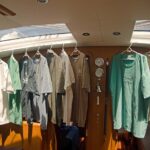 The working hypothesis is that I am wearing appropriate clothing and footwear (considering that the emergency is in my closet next to my clothing this assumption isn’t too far off the mark). This allows the clothing category to be short. I need to carry spare socks to take care of my feet to allow for rotation and drying. There’s an extra shirt and a base layer with long underwear and long sleeves as both dry sleeping gear and potentially as extra warm layers if the weather is cold. While I won’t arrive in stylish gear, and one might not want to be downwind of me, I’ll be warm and dry when I get there.
The working hypothesis is that I am wearing appropriate clothing and footwear (considering that the emergency is in my closet next to my clothing this assumption isn’t too far off the mark). This allows the clothing category to be short. I need to carry spare socks to take care of my feet to allow for rotation and drying. There’s an extra shirt and a base layer with long underwear and long sleeves as both dry sleeping gear and potentially as extra warm layers if the weather is cold. While I won’t arrive in stylish gear, and one might not want to be downwind of me, I’ll be warm and dry when I get there.
| Description | Grams | %Cat.(g) | Cost (€) | %Cat.(€) | Comments |
|---|---|---|---|---|---|
| T-Shirt, boxers & spare socks | 385.0 | 43.4% | 21.00 | 33.4% | The socks are quality Darn Tough Socks |
| Base-layer underwear + shirt | 309.5 | 34.9% | 32.97 | 52.4% | dry sleepwear, long base layer, technical material for fast drying |
| Shemagh | 177.0 | 20.0% | 08.79 | 14.0% | Head and face protection, tourniquet, water filtration |
| Vacuum bag | 15.0 | 1.7% | 00.10 | 0.2% | Clothing sealed to minimize volume and keep dry |
| Totals | 886.5g | €62.86 |
Food
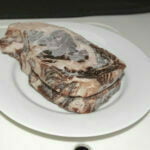 While I’d love to have those steaks ready in my bag, I’m going to have to make do with much less. People can go without food for much longer than the 72-hour period for which this emergency bag has been designed, so food is not necessary and just extra weight, as are any items needed to prepare food. I recognize that all of items listed here are for comfort and not survival. My original pack had MREs, but as each weighed in at over 800g each they quickly got demoted and put into my home emergency cupboard! I could reduce my food supplies in order to save weight, but there’s nothing like a nice hearty warm meal to get the spirits up, so I’m keeping these items in the backpack. The corresponding cooking gear also serves to disinfect water, so at least that weight isn’t completely superfluous.
While I’d love to have those steaks ready in my bag, I’m going to have to make do with much less. People can go without food for much longer than the 72-hour period for which this emergency bag has been designed, so food is not necessary and just extra weight, as are any items needed to prepare food. I recognize that all of items listed here are for comfort and not survival. My original pack had MREs, but as each weighed in at over 800g each they quickly got demoted and put into my home emergency cupboard! I could reduce my food supplies in order to save weight, but there’s nothing like a nice hearty warm meal to get the spirits up, so I’m keeping these items in the backpack. The corresponding cooking gear also serves to disinfect water, so at least that weight isn’t completely superfluous.
| Description | Weight (g) | %Total(g) | Cost (€) | %Total(€) | Calories | Comments |
|---|---|---|---|---|---|---|
| Freezer bag | 6 | 0.6% | 0.10 | 12.6% | 0 | Used to store everything together |
| (2) dehydrated Egg w/Onions | 250 | 23.2% | 11.90 | 12.6% | 1375 | Trek'n eat Eggs w/Onions meal |
| (2) dehydrated Beef Casserole | 310 | 28.7% | 15.30 | 16.9% | 1267 | Trek'n Eat Beef Casserole w/Noodles meals |
| Beef Jerky | 196 | 18.2% | 15.00 | 29.6% | 804 | Snack food while underway |
| Beef Soup | 140 | 13.0% | 2.58 | 114.3% | 392 | Maggi Beef Soup |
| Dextro Energy Tablets | 48.6 | 4.5% | 0.75 | 224.7% | 170 | Dextro-Energen Quick energy tablets |
| Ground coffee | 128.4 | 11.9% | 1.92 | 312.5% | 0 | Home-roasted Sidamo coffee to feed my addiction |
| Totals | 1,079.0g | €47.55 | 4008kCal |
Cooking
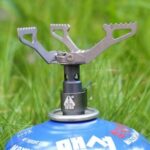 Much of this category can be considered unnecessary if I were to dispense with food. But I have to draw the line somewhere and boiling water with either a hobo stove or a gas burner is part of every survival kit. As a bonus reason, I have the items already.
Much of this category can be considered unnecessary if I were to dispense with food. But I have to draw the line somewhere and boiling water with either a hobo stove or a gas burner is part of every survival kit. As a bonus reason, I have the items already.
| Description | Weight (g) | %Total(g) | Cost (€) | %Total(€) | Comments |
|---|---|---|---|---|---|
| Gas burner | 28.7 | 0.3% | 23.37 | 2.3% | The titanium BRS-3000t burner is ultralight and small |
| 230g Primus cooking gas | 383.5 | 3.9% | 5.95 | 0.6% | Primus cartridges are high quality, although the lighter 100g one should suffice for this pack |
| (1) 375ml Mug | 79.1 | 0.8% | 29.95 | 2.9% | TOAKS Titanium mug with lid |
| (1) 1000ml pot and pan | 166.9 | 1.7% | 48.95 | 4.8% | TOAKS Titanium pot and pan |
| (1) small hobo stove | 162.6 | 1.7% | 49.95 | 4.9% | TOAKS Titanium hobo stove |
| (1) Aeropress coffee maker | 186.9 | 1.9% | 25.00 | 2.5% | Aeropress original |
| Spork | 18.4 | 0.2% | 12.49 | 1.2% | Titanium Spork |
| Totals | 1026.1g | 10.5% | €195.66 | 19.2% |
First Aid
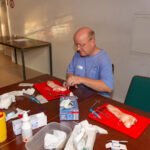
My home and boat first aid kits are huge in comparison to this one. I left out my syringes, diagnostic gear, suture kits, saline drips and transfusion equipment, and much more. I’m only taking a minimum of pharmaceuticals, most of which are just NSAIDs. The rest of the kit is just basic and mainly contains items to stop haemorrhaging and for wound closure. Other items can be improvised on an as-needed basis, instead of the SAM-Splints from my home first-aid bag I can use sticks, duct-tape and paracord from my kit should the need arise.
| Description | Weight (g) | %Total(g) | Cost (€) | %Total(€) | Comments |
|---|---|---|---|---|---|
| (1) Plastic bag | 14 | 0.1% | 0.08 | 0% | Check out First Aid & Medical Manuals |
| Large gauze swab | 3.8 | 0% | 0.25 | 0% | |
| Large absorbent pad | 8.4 | 0.1% | 0.25 | 0% | |
| (2) pair non-sterile gloves | 20.7 | 0.2% | 0.25 | 0% | |
| (10) sterile applicator | 3.5 | 0% | 0.25 | 0% | |
| (1) Surgical wound dressing | 2.1 | 0% | 0.25 | 0% | |
| Abdominal Pad | 9.2 | 0.1% | 0.25 | 0% | |
| (4) small Band-Aids | 2.3 | 0% | 0.25 | 0% | |
| Adhesive wound dressing | 2.0 | 0% | 0.25 | 0% | |
| Waterproof dressing | 2.0 | 0% | 0.25 | 0% | |
| Roll Non-sterile band | 2.1 | 0% | 0.25 | 0% | |
| (3) Leukosan wound closure strips | 2.4 | 0% | 0.25 | 0% | |
| (1) Moleskin blister pad | 3.1 | 0% | 0.25 | 0% | |
| (1) Wound cleaning tissue | 4.6 | 0% | 0.25 | 0% | |
| (4) isopropyl prep pads | 3.5 | 0% | 0.25 | 0% | |
| (4) sting relief pads | 2.9 | 0% | 0.25 | 0% | |
| (1) Elastic bandage | 9.4 | 0.1% | 0.25 | 0% | |
| (1) Elastic bandage | 7.7 | 0.1% | 0.25 | 0% | |
| (1) Triangular bandage | 23.4 | 0.2% | 0.25 | 0% | |
| (1) Emergency blanket | 49.9 | 0.5% | 0.25 | 0% | |
| (1) Wrapping Tape | 25.2 | 0.3% | 0.25 | 0% | |
| (1) Tourniquet | 62.9 | 0.6% | 7.50 | 0.7% | |
| Pillbox | 3.1 | 0% | 0.10 | 0% | Contains the pills |
| - (10) 500mg Paracetemol | 0.10 | 0% | NSAID | ||
| - (3) 90mg Etoricoxib | 1.00 | 0.1% | 1x/Day, NSAID | ||
| - (10) 4mg OTC antihistamine | 0.50 | 0% | Antiallergenic | ||
| - (10) 25mg diclofenac | 0.50 | 0% | 1x every 4/6 hours. NSAID | ||
| - (5) Imodium | 0.50 | 0% | Anti-diarrhea | ||
| Totals | 268.2g | 2.8% | €15.28 | 1.5% |
Fire & Light
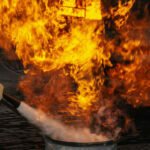 While it is good to know how to make fire using no tools whatsoever, I’m not that much of a Luddite! Since fire (for heat) ranks up there with water when it comes to survival outdoors, I’ve got multiple independent methods of making fire. The primary method is just a simple disposable lighter – good for hundreds of flames and quite fool proof. Secondary are matches, some normal household ones and some waterproof ones, which will even burn underwater! Then comes the ubiquitous firestick with a ferrocerium rod and striker as method number 4. That takes care of starting a fire, my primary source of fuel is a canister of pressurized gas. Should that run out, I can use my hobo stove and if dry tinder isn’t available, I’ve got some drier lint (or other cotton, such as from the Q-Tips or a shirt) and Vaseline or the disinfectant or wipes to get a fire going. Multiple layers and redundant methods are important here as hypothermia is a real killer.
While it is good to know how to make fire using no tools whatsoever, I’m not that much of a Luddite! Since fire (for heat) ranks up there with water when it comes to survival outdoors, I’ve got multiple independent methods of making fire. The primary method is just a simple disposable lighter – good for hundreds of flames and quite fool proof. Secondary are matches, some normal household ones and some waterproof ones, which will even burn underwater! Then comes the ubiquitous firestick with a ferrocerium rod and striker as method number 4. That takes care of starting a fire, my primary source of fuel is a canister of pressurized gas. Should that run out, I can use my hobo stove and if dry tinder isn’t available, I’ve got some drier lint (or other cotton, such as from the Q-Tips or a shirt) and Vaseline or the disinfectant or wipes to get a fire going. Multiple layers and redundant methods are important here as hypothermia is a real killer.
| Description | Weight (g) | %Total(g) | Cost (€) | %Total(€) | Comments |
|---|---|---|---|---|---|
| (1) Plastic bag | 6.0 | 0.1% | 0.10 | 0% | Waterproof container |
| (1) Ferrocerium firestarter rod | 43.4 | 0.4% | 5.87 | 0.6% | Small rod with striker |
| (1) 10h Paraffin candle | 43.9 | 0.4% | 0.25 | 0% | Small light, heat, starting fire |
| (1) LED Flashlight | 175.3 | 1.8% | 49.72 | 4.9% | 4x AAA LED Lenser P7 flashlight |
| (1) LED Headlamp | 75.4 | 0.8% | 5.00 | 0.5% | 3xAAA LED headlamp |
| (4) Spare AAA batteries | 46.5 | 0.5% | 2.33 | 0.2% | Backup batteries for all electronics |
| (1) BIC disposable lighter | 17.5 | 0.2% | 0.33 | 0% | Main ignition system |
| (1) Waterproof matchbox | 19.2 | 0.2% | 1.94 | 0.2% | Storage of all matches |
| - Storm Matches | 3.95 | 0.4% | Secure matches | ||
| - Normal Matches | 0.15 | 0% | Kitchen matches | ||
| - Striking surface | 0.01 | 0% | spare striker | ||
| - Lint | 0 | 0% | Drier lint as backup tinder | ||
| Totals | 427.2g | 2.8% | €69.65 | 1.5% |
Shelter
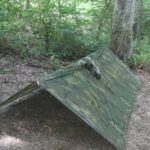 This is in the top 3 categories along with “Fire” and “Water”. The Poncho is a huge military style one which is a rain covering that also keeps the backpack dry, but it also makes a great rain shelter and tent. With the poncho liner and bivy sack these can be combined in many ways to make a warm and comfortable sleeping arrangement. The most common combination is called a “Ranger Taco” or “Ranger Roll” but depending upon terrain and requirements it can be set up differently. With a bit of creativity this is not only warm enough but can be almost comfortable.
This is in the top 3 categories along with “Fire” and “Water”. The Poncho is a huge military style one which is a rain covering that also keeps the backpack dry, but it also makes a great rain shelter and tent. With the poncho liner and bivy sack these can be combined in many ways to make a warm and comfortable sleeping arrangement. The most common combination is called a “Ranger Taco” or “Ranger Roll” but depending upon terrain and requirements it can be set up differently. With a bit of creativity this is not only warm enough but can be almost comfortable.
| Description | Weight (g) | %Total(g) | Cost (€) | %Total(€) | Comments |
|---|---|---|---|---|---|
| (4) titanium tent pegs | 48.1 | 0.5% | 14.98 | 1.5% | Pegs for quick shelter, grid for cooker, digging tool |
| (1) Poncho 210x145 | 467.0 | 4.8% | 37.22 | 3.7% | Helikon-Tex Poncho, reinforced for raingear or shelter |
| (1) Poncho liner 210x150 | 832.0 | 8.5% | 31.18 | 3.1% | Attaches to poncho. Warmth, protection, bedroll, Ranger taco |
| (5m) Paracord | 60.0 | 0.6% | 1.50 | 0.1% | Ridgeline, various uses |
| (10m) Paracord | 137.2 | 1.4%% | 3.00 | 0.3% | as above |
| (1) Emergency blanket | 65.3 | 0.7% | 3.95 | 0.4% | Backup survival warmth |
| (1) bivvy bag | 342.5 | 3.5% | 109.00 | 10.7% | Waterproof Snugpak SF Bivvi bag for shelter |
| Totals | 1952.1g | 20.0% | €200.83 | 19.7% |
Miscellaneous
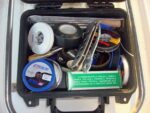
Everything else that doesn’t fit directly into one of the other categories is placed here.
| Description | Weight (g) | %Total(g) | Cost (€) | %Total(€) | Comments |
|---|---|---|---|---|---|
| Marker Pen | 15.8 | 1.4% | 1.75 | 0.6% | Tourniquet time, leaving messages, tagging anything |
| Passport & Vaccination Book & Cash | 50 | 4.3% | 0.00 | 0.0% | Needed afterwards |
| Lensatic Compass | 86.6 | 7.5% | 14.99 | 5.0% | Mil-Tec ranger compass |
| Signalling mirror | 31.9 | 2.8% | 8.31 | 2.7% | Heliograph |
| Waterproof paper + Pencil | 35.8 | 3.1% | 4.99 | 1.6% | Writing in the rain and wet |
| Reading Glasses | 27.0 | 2.3% | 30.00 | 9.9% | If only I didn't need them... |
| Gloves | 79.2 | 6.8% | 6.02 | 2.0% | work gloves |
| Multitool | 280.0 | 24.2% | 89.00 | 29.4% | Leatherman Sidekick multitool. From extra knife to saw to screwdriver, a multitool is worth the extra weight and cost |
| Whistle | 7.0 | 0.6% | 1.00 | 0.3% | Signalling, should I need to |
| (3m) Duct-Tape | 21.5 | 1.9% | 1.69 | 0.6% | Repair, waterproofing, First Aid |
| (1) Full-Tang knife | 523.0 | 45.2% | 145.00 | 47.9% | Ka-Bar Becker Companion BK2 is my choice. The knife is used for chopping, cutting, whittling and much more and is a core survival tool. I sharpened it upon purchase. In addition to the above, it can be used as a defensive weapon against attacking squirrels (and zombies). |
| Totals | 1157.8g | €302.75 |

